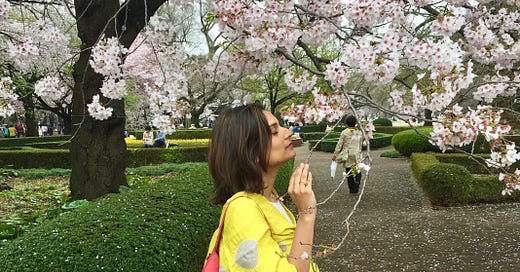Of the various afflictions I suffer from: sharp flashes of temper, a tendency to talk too loudly, the overwhelming need to practice dance steps while waiting at traffic lights, anticipatory nostalgia is amongst the most chronic. It is rare for me to experience something wonderful without that experience being tinged with the pathos of the knowledge of its imminent passing.
The balletic swirl of steam rising from a cup of jasmine tea in a Chengdu tea-house would have me missing it at some unspecified time in the future when I knew the moment would be reduced to a receding memory. Another time, I’d be sitting by the sea near Labuan Bajo, at the eastern end of Indonesia, losing myself in a horizon so huge I couldn’t help but believe that a bit further and I’d fall off the edge of the earth. But mixed in with the magic would be the nostalgia for this very moment; a moment that I knew, even as it was unfolding, was irreplicable.
Nothing brought on a bout of anticipatory nostalgia as strongly as bathing in Japan’s cherry blossoms in full bloom. There was a build up to the sakura season that set the pulse racing long before the flowers began to unfurl. From as early as January a Blossom Forecast on TV offered a petal-by-petal analysis of the advance of the blooms as they rippled from the deep south to the north of the archipelago, like a pink and white Mexican wave.
And because this was Japan, where accuracy was not an option as much as an axiom, the sakura season wasn’t official until a specially appointed civil servant, one amongst an army of whom spent weeks examining “barometer” trees in locations that were kept secret to protect them from blossom saboteurs, gave the signal that yes, indeed, the trees were in bloom. Over 600 different varieties of cherry trees exist, but it was the pale pink blossoms of the ‘yoshino’ – Japan’s most common type – that were used by the bloom-investigating bureaucrats as the yardstick by which to declare the season open in the nation’s capital. The green light was usually given after more than five blossoms had unfurled on a yoshino tree at Tokyo’s Yasukuni Shrine.
This could be anywhere between mid-March and early April. My first spring in Japan was in 2017, and that year all the predictions for the sakura bloom were for late March. As it transpired, March came and went with everyone desolately staring at trees whose blossoms remained as tightly closed as a newborn’s fist. It was a tense time, like when your period is late and you feel on edge, delayed, alert.
And then one morning I woke up to a world transformed. The streets were blushing shades of pink. The very air felt aglow. As we drove the children to school that morning, people seemed to be walking about in slow motion, rubbing their eyes in wonder at this miracle of nature. The cherry trees had come alive.
The profound brevity of the sakura and the epiphanies they’d evoked had launched a thousand haikus. My anticipatory nostalgia, I learned, had a name: mono no aware, the Japanese term for the pain of the finiteness of things, laced with the knowledge that transience is an essential part of their beauty.
Haiku master, Matsuo Basho (1644–1694) put it best when he wrote:
Between our two lives
there is also the life of
the cherry blossom.
Basho, I discovered, was an anticipatory nostalgic nonpareil. Amongst his best-known poems is one about Kyoto that goes thus:
Even in Kyoto —
hearing the cuckoo’s cry —
I long for Kyoto.
The wonderful thing about being subject to this condition is that the foreseen nostalgia actually enhances the experience in the now. It is the knowledge that this moment that you are imagining missing in the future is pithy, and will never be recovered, that allows you to fully commit to it. It enables you to appreciate that moment in the present, and from the future, simultaneously. It's a neat trick: a collapsing of space and time, as if entering a fourth dimension. OK, I better shut up before I reveal my utter lack of scientific understanding. Instead let me blab on about something else I don’t know much about: Eastern wisdom.
The goal, I’ve come to believe, should be to replace mourning the passing of things that inevitably pass, with delight in the fact that they were and that you were there to witness them. If we learn to revel in the finiteness of beauty (à la mono no aware) our Buddha self would approve.
Did any of this make sense to you? Am I alone in my future nostalgia (other than the entire cherry blossom appreciating nation of Japan, of course)? Do you agree that the fleeting nature of some things makes them more attractive? Do we strive too much for permanence? Let me know your thoughts in the comments below. And as usual, please share this post and encourage your friends to subscribe to the Global Jigsaw. Alvida, but only until next week.





I feel this, too. I feel it most keenly with parenting. I see the moments leaving as they happen. I think it does enhance my awareness and helps me focus on really being present for the fleeting things and times and not taking them for granted.
It is the permanence of death that gives meaning to life, although fleeting.